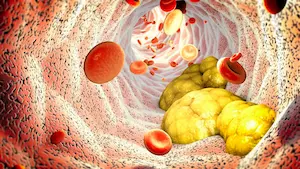
PROMO!
First order? Get 10% OFF with this code: 1storder
Written by

The 176-191 Fragment has gained significant attention in weight loss research studies. This synthetic peptide derives from human growth hormone amino acids 176-191.
Research indicates it may specifically target fat cells without affecting muscle mass. Studies show the compound could promote lipolysis through beta-3 adrenergic receptor activation.
Scientists have observed promising results in laboratory settings for metabolic research. The peptide appears to maintain insulin sensitivity during fat burning processes.
Peptide Works supplies this research compound for scientific investigation purposes only. Current evidence suggests selective adipose tissue targeting capabilities.
Explore HGH Fragment 176–191 from Peptide Works, a synthetic growth hormone fragment researched for its potential to target fat metabolism and support adipose tissue studies.

The 176-191 Fragment supports weight loss by improving metabolism beyond fat burning. Studies show it raises energy use and fat burning soon after use. This peptide boosts heat in muscles to increase calorie burn.
Research finds calorie burn stays high for several hours. It helps break down fat without affecting blood sugar. Scientists noticed it encourages fat loss safely.
Overall, it may help reduce body fat in lab studies. AOD-9604, a similar peptide, also helps with weight loss.

176-191 Fragment and AOD-9604 both aid fat loss in research . 176-191 Fragment targets fat cells by activating fat breakdown pathways.
AOD-9604 mainly stimulates fat burning via beta-3 receptors. Research shows AOD-9604 has more clinical trials and safety data. Combining both may enhance fat loss effects in labs.
Peptides like FTPP can support this combination by improving metabolism. Each peptide has unique mechanisms suited for weight loss studies. Scientists use them to explore different fat loss pathways and benefits.
Discover AOD-9604 from Peptide Works, a peptide studied for its role in stimulating fat breakdown pathways and supporting weight management research.
FTPP targets fat blood vessels by disrupting blood flow to white adipose tissue. This causes fat cells to die and helps the body metabolize stored fat.
Research shows this vascular targeting leads to significant fat loss in studies. By cutting off blood supply, FTPP effectively reduces stubborn fat areas.
Its mechanism differs from 176-191 Fragment, which promotes fat breakdown through receptors. Scientists continue studying different peptides like FTPP’s for unique fat burning vascular approach in laboratories.
This peptide offers researchers a different pathway for studying weight loss mechanisms. FTPP demonstrates promise as a research tool for understanding fat metabolism.
White adipose tissue stores surplus energy in the form of fat within the body. It plays a major role in obesity and weight gain research. Targeting white fat is key because it builds up in stubborn areas.
Blood vessels supply white fat with oxygen and nutrients for growth. Peptides like FTPP cut blood supply, reducing white fat effectively.
Understanding white fat supports the development of better weight loss methods. 176-191 Fragment and AOD-9604 act differently on fat metabolism. Research continues exploring white fat’s role in obesity treatment.

Fat in the belly, thighs, and hips is hard to lose through diet and exercise. These areas have special fat cell receptors that block fat breakdown processes.
Genetics and hormones determine where the body stores fat most persistently. Blood flow to these areas supplies nutrients that help fat cells survive longer.
Peptides like FTPP cut off blood supply to stubborn fat cells effectively. The 176-191 Fragment works differently by targeting fat metabolism in these resistant areas.
Research shows peptides can reduce stubborn fat where traditional methods fail. Understanding these biological factors helps explain why some areas need targeted approaches.
Check out FTPP from Peptide Works, a vascular-targeting peptide researched for its unique ability to disrupt blood flow to white adipose tissue in fat reduction studies.
Genetics and hormones influence weight loss outcomes with 176-191 Fragment. Genetic factors control fat distribution and response to peptides in research studies.
Hormones affect metabolism and fat storage patterns in different body areas. Gene variations impact receptor density and fat breakdown mechanisms.
Peptides like 176-191 Fragment target metabolic receptors to modulate fat tissue activity. Understanding these mechanisms aids interpretation of peptide effects in laboratory settings.
Ongoing research focuses on personalizing peptide therapies based on biological profiles. These genetic differences explain variability in 176-191 Fragment research outcomes.
The future of HGH Fragment 176-191 in weight loss research is promising. Its ability to target fat cells and boost metabolism offers a new approach to combating obesity.
Ongoing research explores its safety and effectiveness in laboratory settings. Personalized therapies like HGH Fragment 176-191 may become essential to weight management strategies.
As scientists better understand genetic and hormonal influences on fat loss, targeted peptide approaches will advance.
Peptide Works provides quality peptides for research purposes, advancing metabolic health and weight loss solutions.
All products discussed are supplied for research purposes only and are not intended for human use.
[1] Heffernan MA, Jiang WJ, Thorburn AW, Ng FM. Effects of oral administration of a synthetic fragment of human growth hormone on lipid metabolism. Am J Physiol Endocrinol Metab. 2000 Sep;279(3):E501-7.
[2] Barnhart KF, Christianson DR, Hanley PW, Driessen WH, Bernacky BJ, Baze WB, Wen S, Tian M, Ma J, Kolonin MG, Saha PK, Do KA, Hulvat JF, Gelovani JG, Chan L, Arap W, Pasqualini R. A peptidomimetic targeting white fat causes weight loss and improved insulin resistance in obese monkeys. Sci Transl Med. 2011 Nov 9;3(108):108ra112.
[3] Kim DH, Woods SC, Seeley RJ. Peptide designed to elicit apoptosis in adipose tissue endothelium reduces food intake and body weight. Diabetes. 2010 Apr;59(4):907-15.
[4] Heffernan M, Summers RJ, Thorburn A, Ogru E, Gianello R, Jiang WJ, Ng FM. The effects of human GH and its lipolytic fragment (AOD9604) on lipid metabolism following chronic treatment in obese mice and beta(3)-AR knock-out mice. Endocrinology. 2001 Dec;142(12):5182-9.
ALL CONTENT AND PRODUCT INFORMATION AVAILABLE ON THIS WEBSITE IS FOR EDUCATIONAL PURPOSES ONLY.
DISCLAIMER: These products are intended solely as a research chemical only. This classification allows for their use only for research development and laboratory studies. The information available on our Peptide Works website: https://peptide-works.com/ is provided for educational purposes only. These products are not for human or animal use or consumption in any manner. Handling of these products should be limited to suitably qualified professionals. They are not to be classified as a drug, food, cosmetic, or medicinal product and must not be mislabelled or used as such.
Peptide Works
Related Articles

How effective could Orexin Addiction Therapy be?
Have you ever wondered why some people find it so hard to stop addictive habits, even when they truly want

Can NAD Therapy Improve Cognitive Performance?
NAD Therapy is gaining attention in research for its possible role in brain health. NAD+ (nicotinamide adenine dinucleotide) is a

Enhancing Energy with NAD+ Supplements
Energy is the driving force behind focus, movement, and recovery. When cells have less energy to work with, the body